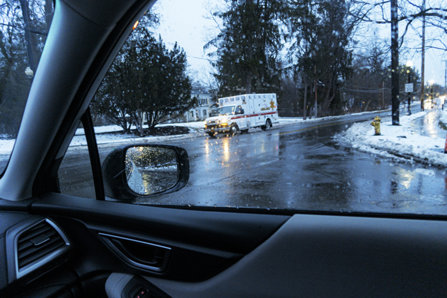The Effects of Addiction Are Obvious, Why Is So Little Being Done to Treat It?

One could say that drug addiction is more in the public eye now than perhaps ever before, certainly more so now than in many decades prior. And certainly, the effects of addiction are obvious. News reports and public health officials reveal harsh statistics on rising overdose fatality rates and soaring numbers of Americans becoming addicted to anything from street drugs to prescribed medications on an almost daily basis.
The effects of America’s addiction epidemic are more than apparent, and while it’s true that simply observing the problem is quite different from developing a full and comprehensive understanding of it, it’s still quite concerning that so little is being done to treat a problem that is broadly visible.
Why is this the case, and what can Americans do to ensure addicts receive the help that they need?
The Scope of Addiction in America
According to a 2016 Surgeon General Report, about 21 million Americans are addicted to drugs and alcohol. That figure represents about 8% of this country’s adult population. Quoting U.S. Surgeon General Dr. Vivek Murthy, “Alcohol and drug addiction take an enormous toll on individuals, families, and communities.” Dr. Murthy went on to say, “Most Americans know someone who has been touched by an alcohol or a drug use disorder. Yet 90 percent of people with a substance use disorder are not getting treatment. That has to change.”
“Most Americans know someone who has been touched by an alcohol or a drug use disorder. Yet 90 percent of people with a substance use disorder are not getting treatment. That has to change.”

And it’s not just the 21 million Americans who need help. The Surgeon General’s report also looked at who is at risk for addiction, i.e., individuals who have already engaged in risky behavior with drugs or alcohol but who are not yet addicted to such substances. The report found that, in 2015, almost 48 million Americans experimented with an illicit drug or misused a prescription drug. About 67 million Americans drank alcohol to excess, and 28 million drove under the influence of drugs or alcohol. All of these groups are at high risk of addiction.
Dr. Murthy’s 2016 report represented the first time in American history when a Surgeon General dedicated a report to addiction alone. After covering the scope of addiction in America, the report outlined many potential solutions to the country’s crisis.
The big question that follows then is: Did the addiction crisis in America get better after 2016? Or worse?
Top, Federal Recognition of a Serious Health Crisis
Not long after the publication of the 2016 Surgeon General Report, America’s addiction crisis rose into the spotlight once again when then-President Donald Trump signed an October 2017 declaration officially labeling America’s opioid crisis a National Public Health Emergency. This was the first time in history when an addiction-related health crisis was recognized as a National Public Health Emergency. With that declaration, the Trump Administration was able to free up additional funds to direct towards prevention and treatment.
Sadly, even though public health officials and political leaders all the way up to the Office of the President were discussing the addiction crisis and making it known, addiction in America has only gotten much, much worse since then.
There are a few reasons why this might be the case. For one, the right treatment modalities are often neglected. Too often, the U.S. focuses on using harm reduction or temporary fixes for addiction, like Medication-Assisted Treatment. Relying solely on medications, harm reduction, and crackdowns on drug trafficking never gets to the roots of the problem, which are the underlying issues and critical crisis factors that caused millions of Americans to become addicted to drugs in the first place.
The Addiction Treatment Gap
The Surgeon General’s report referenced earlier touched on another critical issue, the fact that very few Americans who need addiction treatment ever receive it. The report outlined how one in seven Americans will struggle with an addiction to drugs or alcohol at some point in their lives, and only one in ten will ever receive treatment for that addiction.
No matter how obvious and apparent addiction in America becomes, it will never be overcome unless those who are addicted to drugs and alcohol receive the treatment they need to get off of substances permanently. And this must happen quickly, too. Addiction is a lethal crisis. According to the Centers for Disease Control and Prevention, nearly 841,000 Americans have died from drug overdoses since 1999.
It’s On Us, to Help Us
Prevention

Raising awareness of the addiction crisis is the first step towards curbing the crisis,
especially raising awareness among young people. Again quoting Dr. Murthy, “Although substance misuse problems and use disorders may occur at any age, adolescence and young adulthood are particularly critical at-risk periods.” The doctor went on to say that, “Preventing or even simply delaying young people from trying substances is important to reducing the likelihood of a use disorder later in life.”
The report outlined how people who use alcohol before the age of 15 are four times more likely to develop an alcohol use disorder later in life compared to those who have their first drink at age 20 or older. With this in mind, it becomes clear that Americans should rally together and educate young people on the dangers of drug use. Young people need to understand what’s at stake. They need to see that drugs are extremely harmful, alcohol too. Parents need to teach their kids about drugs and alcohol, and schools need to host seminars and open discussions on the harms and dangers of drugs and alcohol.
Treatment
Addiction is not something that goes away on its own. Those who are addicted to drugs and alcohol must seek help at qualified rehab centers that can help them address the critical, underlying issues and struggles that caused them to turn to mind-altering substances in the first place. It will take hard work and effort certainly, but helping the 21 million Americans who are addicted to drugs and alcohol into and through rehabilitation centers is the only way to ensure the addiction epidemic in the United States comes to an end.
No public health organization, political leader, government, or non-profit organization will get the American people out of the addiction epidemic they are mired in. To overcome this crisis, Americans must commit themselves to:
- Understanding what causes an addiction to drugs and alcohol;
- Understanding what signs and symptoms of addiction to look for;
- Understanding why treatment is needed and how addicts can’t get off drugs on their own;
- Learning how to help someone with an addiction, how to convince them to enter treatment;
- Learning how to educate people in order to prevent more addiction from occurring in the future.
If you or someone you care about is struggling with an addiction to drugs and alcohol, don’t wait until it is too late. Seek help at a qualified drug rehab center today.
Sources:
- https://www.niaaa.nih.gov/news-events/news-noteworthy/surgeon-general-issues-landmark-report-alcohol-drugs-and-health
- https://www.npr.org/2017/10/26/560083795/president-trump-may-declare-opioid-epidemic-national-emergency
- https://www.cdc.gov/drugoverdose/deaths/index.html


 ®
®